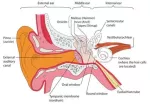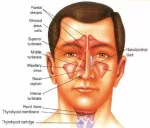
Adenoids and tonsils are often talked about together. You can see your tonsils in the back of your throat, but where are your adenoids? For that matter, what are your adenoids? Let\'s find out.
What Are Adenoids?
The adenoids are a patch of tissue that sit in the back of the nasal cavity.
Although you can easily see your tonsils by standing in front of a mirror and opening your mouth wide, you can\'t see your adenoids this way. Like tonsils, adenoids help keep your body healthy by trapping harmful bacteria and viruses that you breathe in or swallow.
Adenoids do important work as infection fighters for babies and little kids. But they become less important once a kid gets older and the body develops other ways to fight germs.
Adenoids usually shrink after about age 5, and by the teenage years they often practically disappear.
When Adenoids Swell
Because adenoids trap germs that enter the body, adenoid tissue sometimes temporarily swells as it tries to fight off an infection. The swelling sometimes gets better, but sometimes adenoids can get infected themselves.
Swollen or enlarged adenoids are common. When this happens, the tonsils may also get swollen, too. Swollen or infected adenoids can make it tough to breathe and cause these problems:
- a very stuffy nose, so a kid can breathe only through his or her mouth
- snoring and trouble getting a good night\'s sleep
- swollen glands in the neck
- ear problems
Tell a parent if you have any of these problems, so he or she can take you to the doctor.
What Will the Doctor Do?
At the doctor\'s office, the doctor will ask you how things feel in your ears, nose, and throat, and then take a look at these parts. Your doctor will also feel your neck near your jaw.
To check the size of your adenoids, your doctor might ask you to get an X-ray or look in your nose with a tiny telescope. If it looks like your adenoids are infected, the doctor may give you an antibiotic.
When Adenoids Come Out
Sometimes doctors recommend removing the adenoids if medicine doesn\'t help or if they\'re making a kid sick a lot. This means going into the hospital and having surgery.
Sometimes, tonsils and adenoids are removed at the same time when a kid has a tonsillectomy and an adenoidectomy. Both are common surgeries for kids to have.
During these surgeries, kids get special medicine (anesthesia) that makes them fall asleep. The anesthesia makes sure a kid doesn\'t feel any pain while the operation is being done. Neither operation requires stitches. The cut areas will heal on their own. It takes a little time, though. After surgery, a kid will have a sore throat and will need to eat soft foods for a while.










